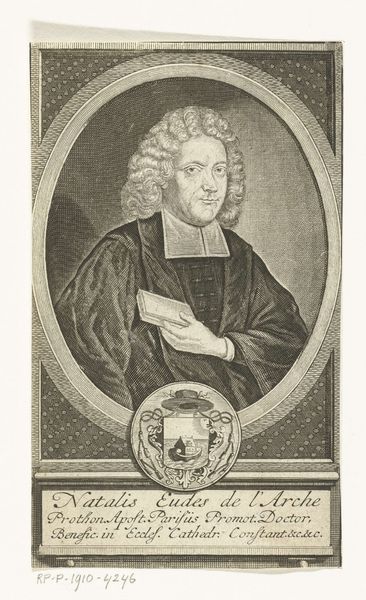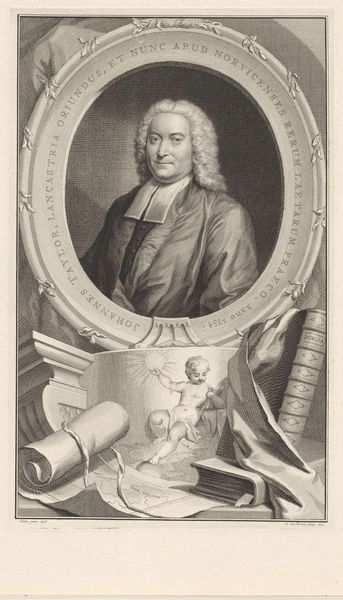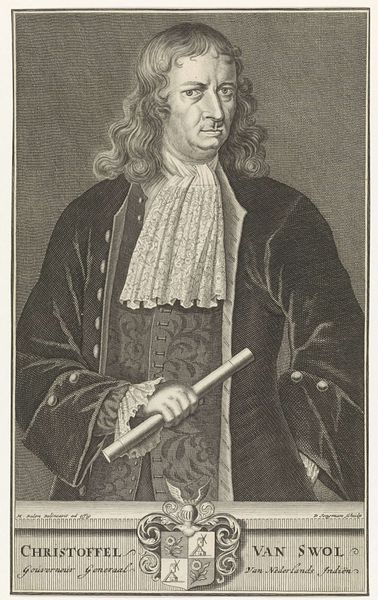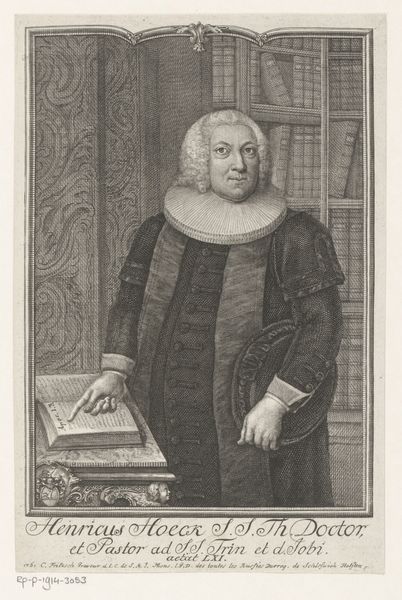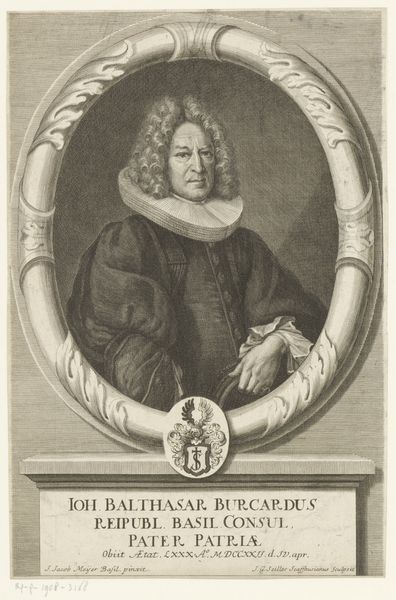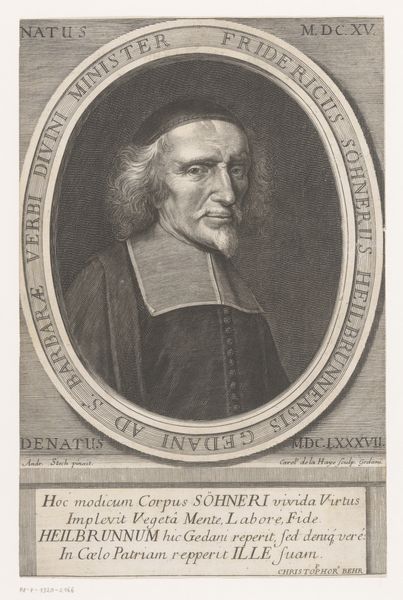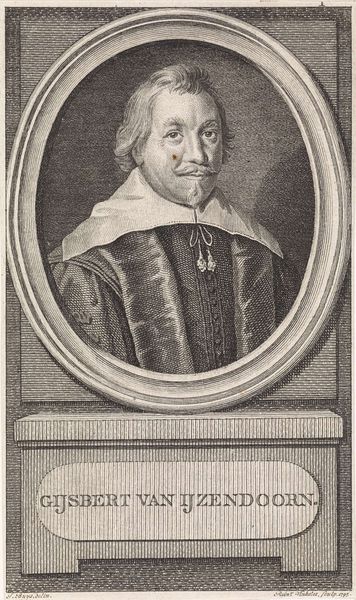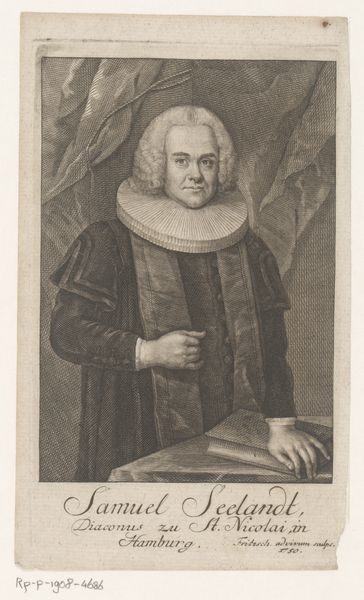
Portret van Hendrik Swaerdecroon, gouverneur-generaal van Nederlands-Indië 1709 - 1726
0:00
0:00
print, engraving
#
portrait
#
baroque
#
dutch-golden-age
# print
#
caricature
#
historical photography
#
history-painting
#
engraving
Dimensions: height 302 mm, width 184 mm
Copyright: Rijks Museum: Open Domain
Curator: Here we see "Portret van Hendrik Swaerdecroon, gouverneur-generaal van Nederlands-Indië," dating from sometime between 1709 and 1726. It is rendered as a print, specifically an engraving. Editor: My first impression is one of stately composure, bordering on pomposity. The figure dominates the frame, and the stark contrast between light and shadow gives it a somewhat austere character. Curator: Indeed. The composition is certainly deliberate, aiming to convey power and authority through the use of line, shape, and form. Note how the engraver employs varied line weights to delineate form and texture. The use of hatching creates depth and dimension in the figure's attire and face, offering an aesthetic logic based on Baroque ideals. Editor: Placing it within its historical moment is crucial. Swaerdecroon served as Governor-General of the Dutch East Indies during a period of intense colonial activity. The sword at his side, the stiff pose—these are visual cues signaling his political might and position in colonial administration. His wealth stems from global power dynamics. Curator: True. Yet I am also struck by the precision and attention to detail characteristic of the engraving as a medium. Each tiny stroke contributes to the overall effect of grandness. Observe the decorative detailing in the tapestry behind him. Editor: This engraving reveals a great deal about the creation and circulation of imagery intended to promote certain ideals of governance during the early modern period. These kinds of works functioned as vehicles of self-representation for powerful individuals embedded in expansive trade networks. Curator: Exactly, with an eye trained for its formal qualities, we recognize the deliberate artistic strategies that contribute to its effectiveness in transmitting these values. Editor: And viewed through a socio-political lens, the print gives an unflinching insight into the self-fashioning and ambitions that justified Dutch colonialism. Curator: Considering its formal characteristics alongside its historical context provides us with a richer, fuller understanding. Editor: A fruitful combination, broadening the picture with meaning extracted from diverse sources.
Comments
No comments
Be the first to comment and join the conversation on the ultimate creative platform.


